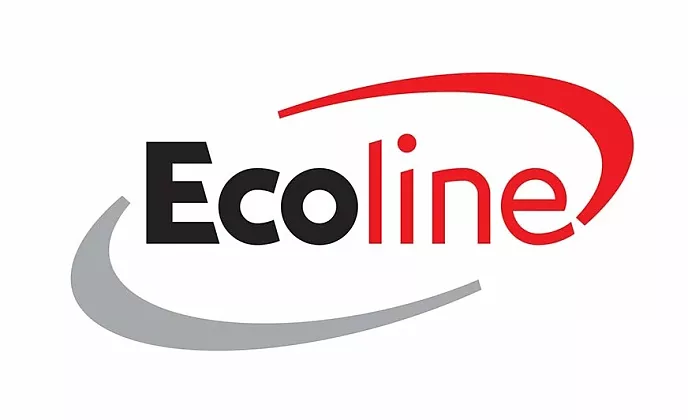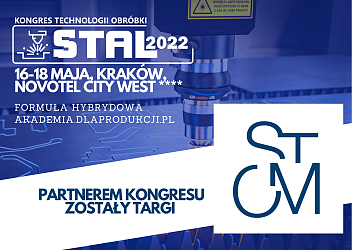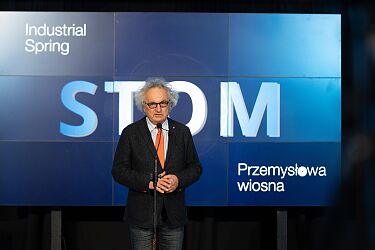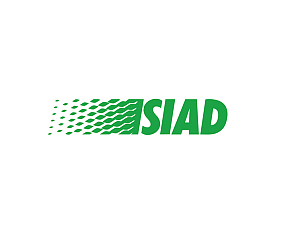News

ECO-LINE offer at the EXPO-SURFACE 2022
Tarnish desaturated as a white patina or a blooming appear on the surface of the powder paint under certain conditions. This is a real nightmare for many powder coating technologists. This is a side effect of the polyester resins reaction during paints annealing. How to prevent this undesirable defect? Paints hardened at low temperatures; the so-called blooming-free paints may be the answer.
Powder paint consists of four groups of components:
→ polymer base consisting of resins which constitute the coating and crosslinking substances (hardeners),
→ pigments for coating's colour and other effects, such as a metallic, hammer-like appearance,
→ fillers defining the cover ratio and physicomechanical properties of the varnish coat,
→ additives, components responsible for paint particles load, the coating appearance, i.e. its smoothness and orange peel effect, and the gloss level from high to deep matt and ultimately the durability of the coating.
POLYMERIZATION
Low molecular weight chemical compounds (monometers) or mixtures of such compounds react with each other until the free functional groups are exhausted; this results in the generation of molecules with a molecular weight many times greater than that of the substrates. Polymers are formed. Properly carried out polymerization guarantees durable, homogeneous and aesthetic coatings.
The process of proper polymerization depends on temperature-heating the function. This is when the molecules melt, become gelly and finally crosslink, which causes the polymers' hardening.
This is when potential problems arise:
→ we do not maintain the heating parameters recommended by the manufacturer,
→ the heating process is not properly controlled,
→ the polymerization time and temperature to the heat capacity of the detail are misaligned,
→ proper maintenance of the painting line, services are missing,
→ not adequate knowledge and experience of the process.
As a consequence, the polymerization is disturbed, the coating is leaky, the physicochemical properties are below expectations, the durability of the coating is clearly poor. The effect resulting from disturbing the polymerization process, especially when the details have a high heat capacity, is the appearance of the blooming effect in the form of a white patina or bloom. Under certain conditions, there are "blooms" on the surface of the powder paint.
BLOOMING: WHY DOES IT APPEAR ON THE SURFACE?
When the paint crosslinking process is smooth, as indicated in the TDS (Technical Data Sheets), the reaction by-products are trapped in the polymerized film and do not reach the surface. If the polymerization rate is reduced or is not regular, these materials will have enough time to emerge and accumulate on the surface fully.
Blooming results from the following:
→ insufficient furnace temperature,
→ slow heating of the detail, a problem common in heavy elements,
→ irregular heating due to the details' thickness variability,
→ extended warm-up time at low temperatures (140 °C-150 °C).
Disposal
The white patina can usually be removed with a cloth to restore the surface to its desired appearance; however, since the blooming effect occurs at low temperatures, it may indicate that the painted parts are insufficiently crosslinked. Thus it is recommended to re-heat the elements.
Prevention:
It is advisable to check the furnace by measuring the temperature distribution on the parts in order to guarantee correct functioning. It may be necessary to raise the temperature and speed up the cooling of thick components after the paint has cured to reduce or eliminate blooming.
However, new and special formulas of powder coatings resistant to the formation of white patina have been developed, also known as blooming-free paints.
BLOOMING-FREE POWDER PAINTS
→ PE-SD/HAA LTC-160°Cx20'
An alternative to super-durable PE systems based on TGIC or PT 910 with low-temperature polymerization.
→ PE-SD/HAA STD-190°Cx10'
An alternative to super-durable PE systems based on TGIC or PT 910 with exceptional fluidity and gloss, with Qualicoat Class 2 approval.
→ Q394.-PE/HAA LTC-160°Cx10'
Lines of polyester powder coatings based on HAA hardener with low polymerization temperature developed for ACE and General Industry applications, approved by Qualicoat Class 1.
Q394 series - the only orange peel product range with Qualicoat Class 1 approval for low crosslinking temperatures.
→ Q194 i Q394 LTC
The Q194 and Q394 LTC are the two new series of TGIC-free polyester powder coatings which provide excellent light and weather resistance, fully respecting the technical specifications of Qualicoat Class 1.
The new generations of Q194 and Q394 LTC powder coatings are more energy-efficient allow faster crosslinking and shorter application times.
The Q194 LTC series is a smooth glossy with a gloss range from 65 to 100 glosses.
The Q394 LTC series is the only Qualicoat approved market version, with a low crosslinking orange peel texture.
→ Seria Q194 LTC
Klasa 1 – Qualicoat Standard Lic. P-1708
Kat. 3 - Smooth gloss (65-95GU)
Heating temperatures: 180°Cx5', 160°Cx10', 150°Cx20'.
Properties: low temperature polymerization, excellent mechanical properties, outstanding resistance to UV radiation, excellent stability in a direct flame fired furnace, excellent resistance to water stains, energy saving.
→ Serie Q394 LTC
Klasa 1 – Qualicoat Standard Lic. P-1709
Kat. 2 - Orange peel texture
Heating temperatures: 180°Cx5', 160°Cx10', 150°Cx20'.
Properties: low temperature polymerization, excellent mechanical properties, outstanding resistance to UV radiation, excellent stability in a direct flame fired furnace, uniform texture effect, masks minor surface defects.
Ecoline - the world of powder coatings
The design and construction of technologically advanced and ecological powder coating is Ecoline's DNA. Precise matching of the proposals with customers' demands can effectively optimize and modernize industrial production processes in clients' enterprises. The offer includes high-class dielectric booths, ultrasonic sieves, complete systems for manual and automatic paint application, installations allowing for the protection of coatings using the electrophoresis method and vertical painting shops.
In addition to advanced technological solutions, the company offers high-class paints and varnishes that guarantee adequate protection of the covered surfaces, and at the same time aesthetics, while observing natural environment needs. Powder coating systems open up completely new perspectives for the functional coating market. Depending on the application, a modern coating can be resistant to chemicals, have antibacterial, conductive properties, it can be a thin-layered, non-slip, metallic or pearl coating; the paints may also provide a finish with a specific structure. Ecoline offers powder paints in all RAL and NCS colours.








